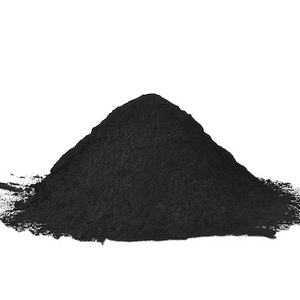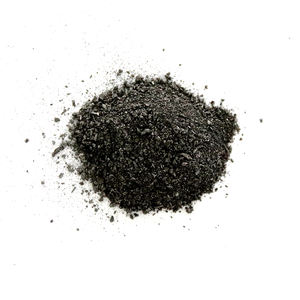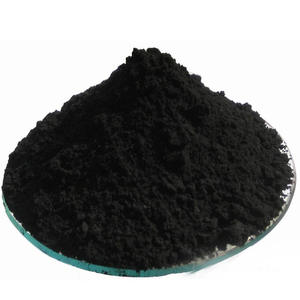Overview of Graphene Anti-wear Agent +for fuel vehicle
Graphene is a single layer of carbon atoms arranged in a hexagonal lattice, forming a two-dimensional material with remarkable properties. Discovered in 2004, it has since captivated the scientific community and industry alike due to its unique combination of strength, conductivity, and flexibility. Graphene is essentially a single, flat sheet of graphite, the material found in pencil lead, but its properties are vastly different when isolated into a single atomic layer.
Features of Graphene Anti-wear Agent +for fuel vehicle
-
Unmatched Strength: Graphene is the strongest known material, with a tensile strength of around 130 gigapascals, surpassing steel by a factor of over 100.
-
Extreme Flexibility: Despite its strength, graphene is highly flexible and can be bent, twisted, or rolled without breaking.
-
Exceptional Electrical Conductivity: It conducts electricity exceptionally well, with electrons moving at velocities approaching the speed of light, making it ideal for electronics.
-
Thermal Conductivity: Graphene is also an excellent thermal conductor, dispersing heat efficiently, useful in heat management applications.
-
Transparency: It is nearly transparent, absorbing only 2.3% of light, which, coupled with its conductivity, makes it suitable for transparent electrodes in displays.
-
Chemically Inert: Graphene is highly resistant to corrosion and stable under a wide range of chemical conditions.

(Graphene Anti-wear Agent +for fuel vehicle)
Parameter of Graphene Anti-wear Agent +for fuel vehicle
Graphene anti-wear agents, specifically designed for fuel vehicles, are innovative materials that significantly enhance the performance and durability of mechanical components. These agents are derived from graphene, a form of carbon with unique properties such as exceptional strength, conductivity, and flexibility. The incorporation of graphene into lubricants and engine oils can lead to a variety of benefits including reduced wear, improved efficiency, and extended service life of the vehicle’s internal combustion engines.
The primary mechanism by which graphene anti-wear agents function is through their ability to form a protective layer on metal surfaces when dispersed in lubricants. This layer acts as a barrier, preventing direct contact between moving parts, thus reducing friction and wear. Graphene’s high surface area-to-volume ratio allows it to adhere strongly to metal surfaces, forming a stable and durable film that lasts throughout the operating cycle of the vehicle. This film not only reduces wear but also enhances the overall efficiency of the engine by minimizing energy loss due to friction.
Moreover, graphene anti-wear agents can improve the viscosity stability of lubricants, ensuring consistent performance under varying temperatures and loads. This stability is crucial in fuel vehicles where extreme conditions, such as high speeds and intense pressures, are common. By maintaining optimal lubrication, these agents help prevent overheating, a common issue that can lead to significant wear and damage over time.
Another key advantage of graphene anti-wear agents is their potential to reduce emissions. By improving the efficiency of the engine, they contribute to lower fuel consumption, which translates to reduced emissions. This environmental benefit aligns with the growing emphasis on sustainable transportation solutions.
Incorporating graphene anti-wear agents into fuel vehicles also opens up possibilities for enhanced diagnostic capabilities. The unique properties of graphene can be used to develop sensors that monitor the health of the engine, alerting drivers to potential issues before they become critical. This proactive maintenance approach can extend the lifespan of the vehicle and reduce the need for costly repairs.
Despite these benefits, the development and integration of graphene anti-wear agents into existing fuel vehicle systems face challenges, primarily related to cost-effectiveness and scalability. The production of graphene is currently expensive, and its incorporation into commercial products requires careful consideration of compatibility with existing materials and manufacturing processes. However, ongoing research and technological advancements are expected to address these issues, making graphene anti-wear agents a viable and promising solution for enhancing the performance and sustainability of fuel vehicles.
In conclusion, graphene anti-wear agents represent a significant advancement in the field of automotive engineering. Their potential to improve efficiency, reduce wear, and enhance environmental performance makes them an attractive option for both manufacturers and consumers seeking to optimize the performance of their fuel vehicles. As technology continues to evolve, the integration of graphene-based solutions will likely become more widespread, leading to a new era of more efficient, durable, and environmentally friendly transportation.

(Graphene Anti-wear Agent +for fuel vehicle)
Applications of Graphene Anti-wear Agent +for fuel vehicle
-
Electronics: In transistors, touchscreens, and flexible electronics due to its conductivity and flexibility, potentially revolutionizing device design.
-
Energy Storage: As electrodes in batteries and supercapacitors, improving energy storage capacity and charging rates.
-
Sensors: High sensitivity and conductivity make graphene ideal for chemical and biological sensors.
-
Composites: Reinforcing materials like plastics, metals, and concrete to enhance strength and conductivity.
-
Water Filtration: Its atomically thin structure enables efficient filtration of contaminants, including salts, viruses, and bacteria.
-
Medicine: Potential uses include drug delivery systems and bio-sensors due to its biocompatibility and unique properties.
Company Profile
Graphne Aerogels is a trusted global chemical material supplier & manufacturer with over 12-year-experience in providing super high-quality aerogel and graphene products.
The company has a professional technical department and Quality Supervision Department, a well-equipped laboratory, and equipped with advanced testing equipment and after-sales customer service center.
If you are looking for high-quality graphene, aerogel and relative products, please feel free to contact us or click on the needed products to send an inquiry.
Payment Methods
L/C, T/T, Western Union, Paypal, Credit Card etc.
Shipment
It could be shipped by sea, by air, or by reveal ASAP as soon as repayment receipt.
FAQs of Graphene Anti-wear Agent +for fuel vehicle
Q: Is Graphene Anti-wear Agent +for fuel vehicle safe for the environment and human health?
A: Research on the environmental and health impacts of graphene is ongoing. While graphene itself is considered relatively inert, concerns exist regarding the potential toxicity of graphene oxide and other derivatives, especially in aquatic ecosystems.
Q: How is Graphene Anti-wear Agent +for fuel vehicle produced?
A: Graphene can be produced through several methods, including mechanical exfoliation (peeling layers off graphite using adhesive tape), chemical vapor deposition (CVD), and chemical reduction of graphene oxide.
Q: Why is Graphene Anti-wear Agent +for fuel vehicle not yet widely used in commercial products?
A: Challenges in producing high-quality graphene at a scalable and cost-effective manner have hindered its widespread adoption. Additionally, integrating graphene into existing manufacturing processes requires further technological advancements.
Q: Can Graphene Anti-wear Agent +for fuel vehicle be used to make stronger and lighter materials?
A: Absolutely, graphene’s addition to composite materials significantly improves their strength and stiffness while reducing weight, making them ideal for aerospace, automotive, and sports equipment.
Q: Does Graphene Anti-wear Agent +for fuel vehicle have any limitations?
A: While graphene possesses outstanding properties, challenges remain in harnessing its full potential, such as achieving high-quality mass production, managing its tendency to restack in composites, and addressing potential health and environmental concerns.

(Graphene Anti-wear Agent +for fuel vehicle)






